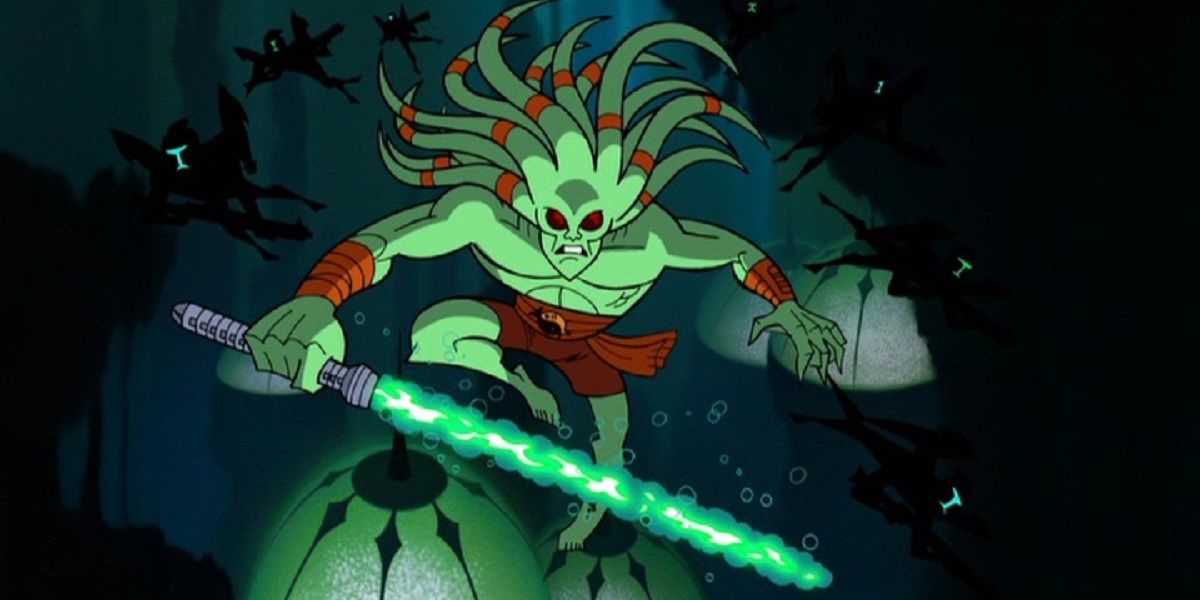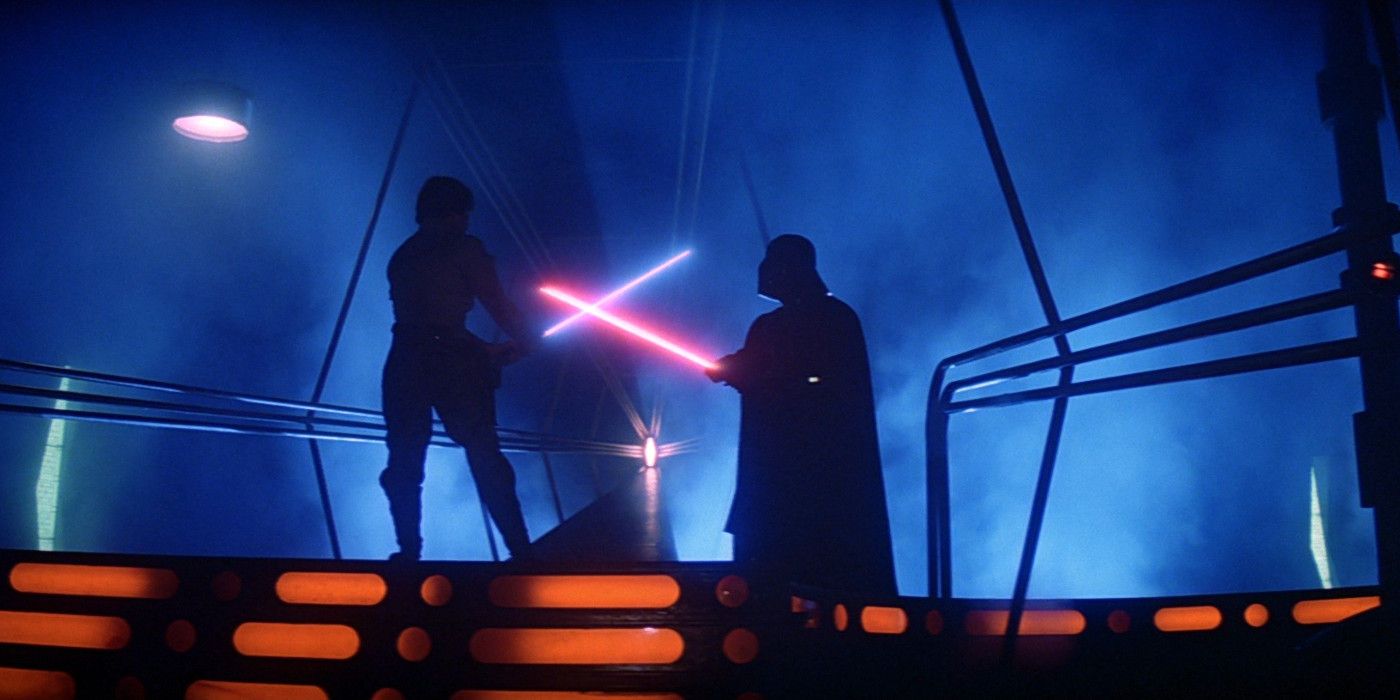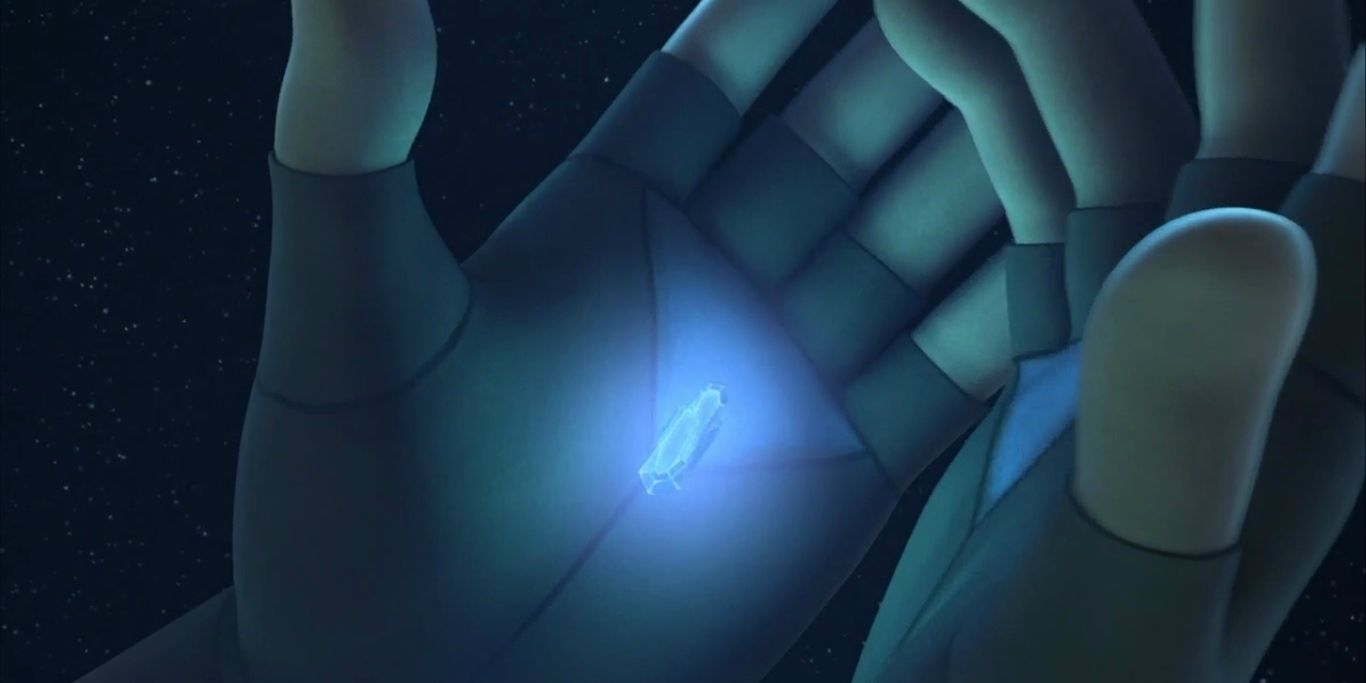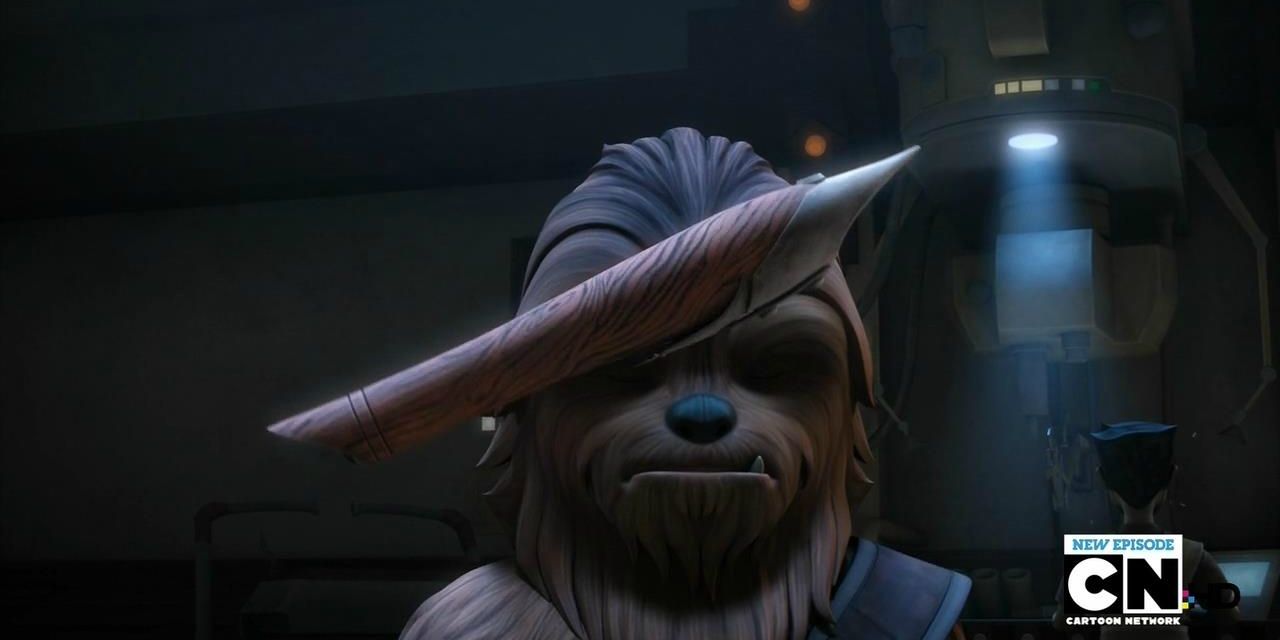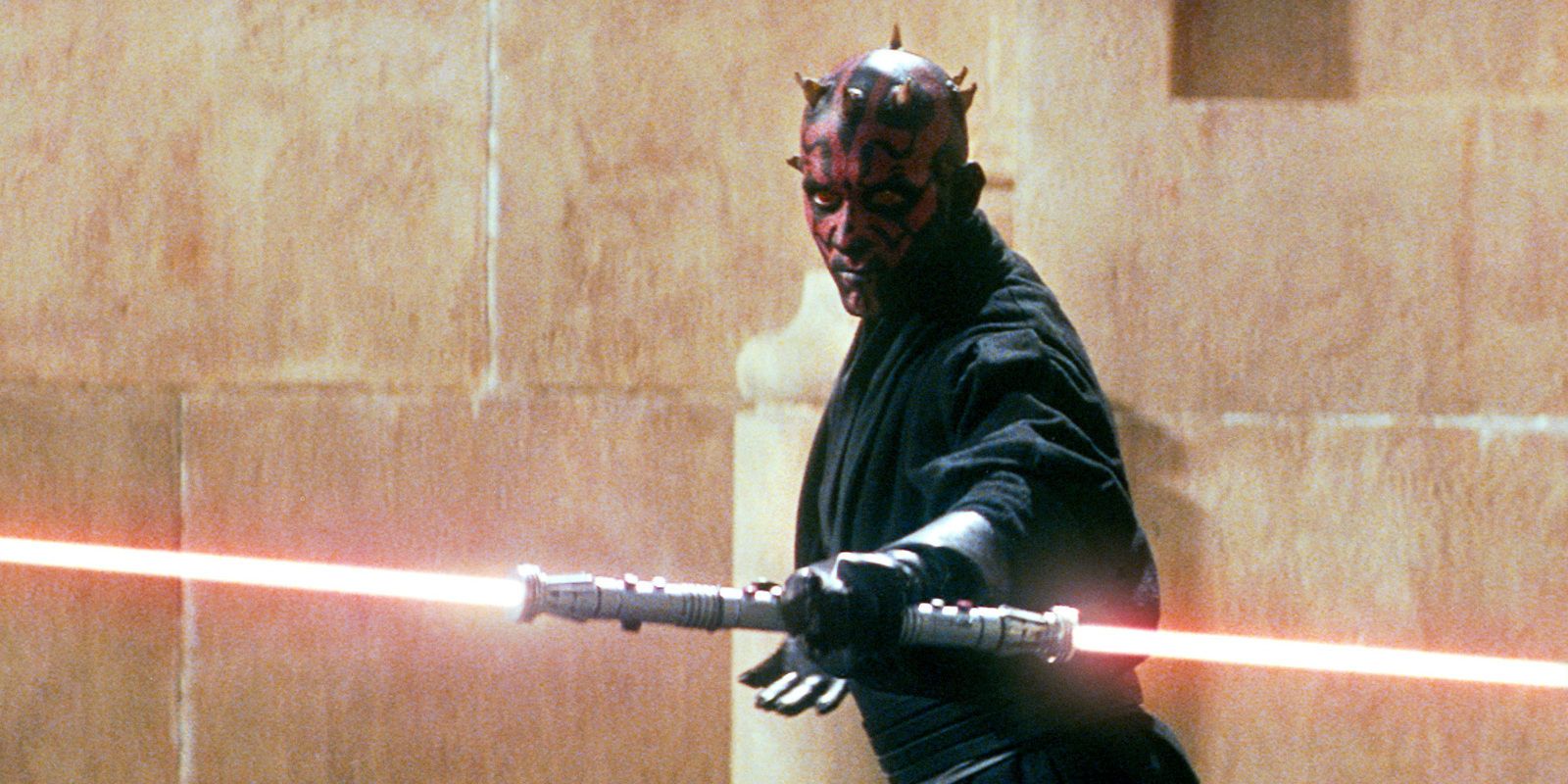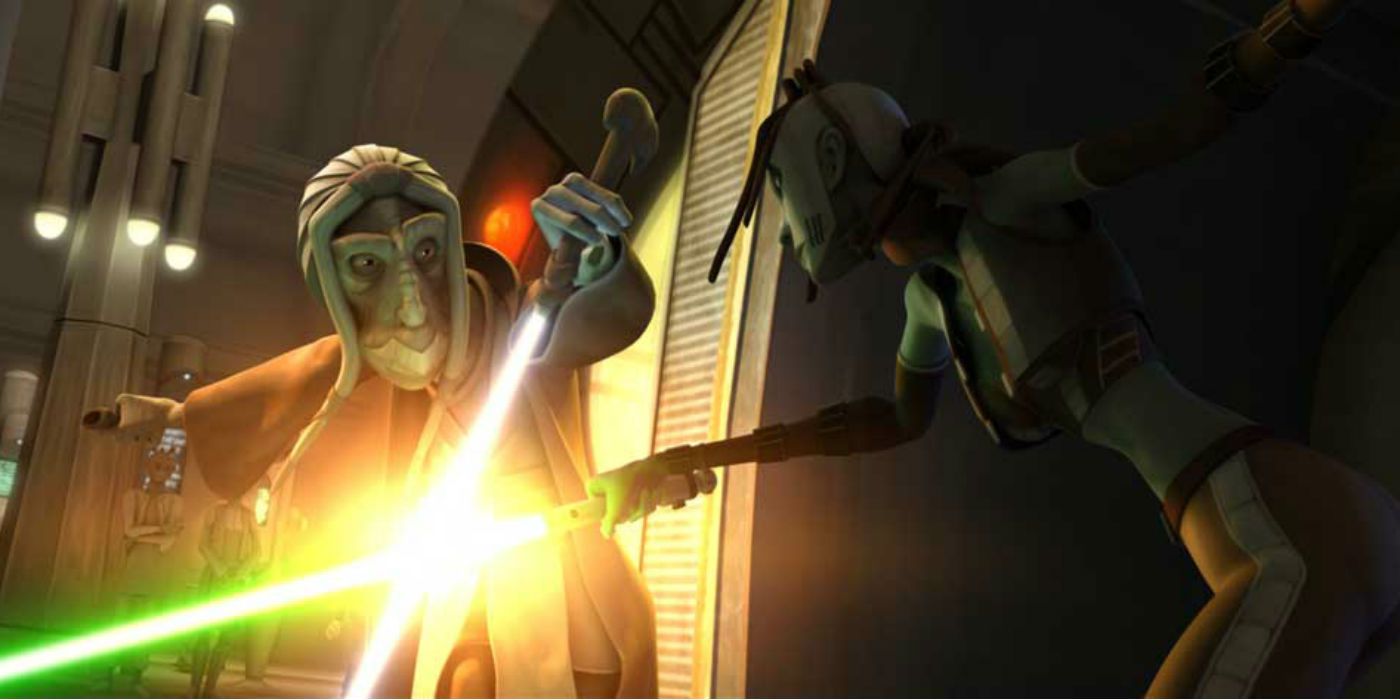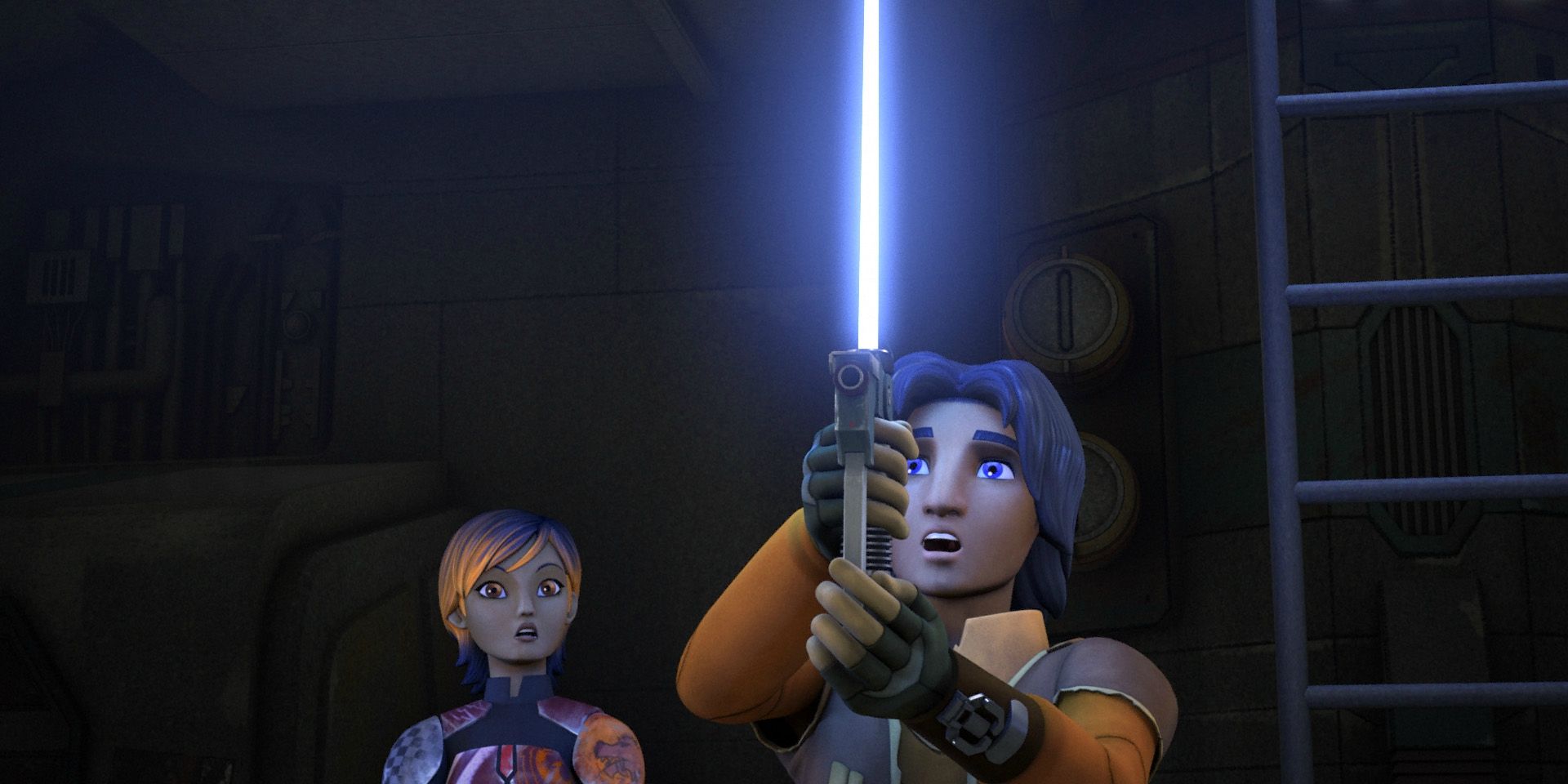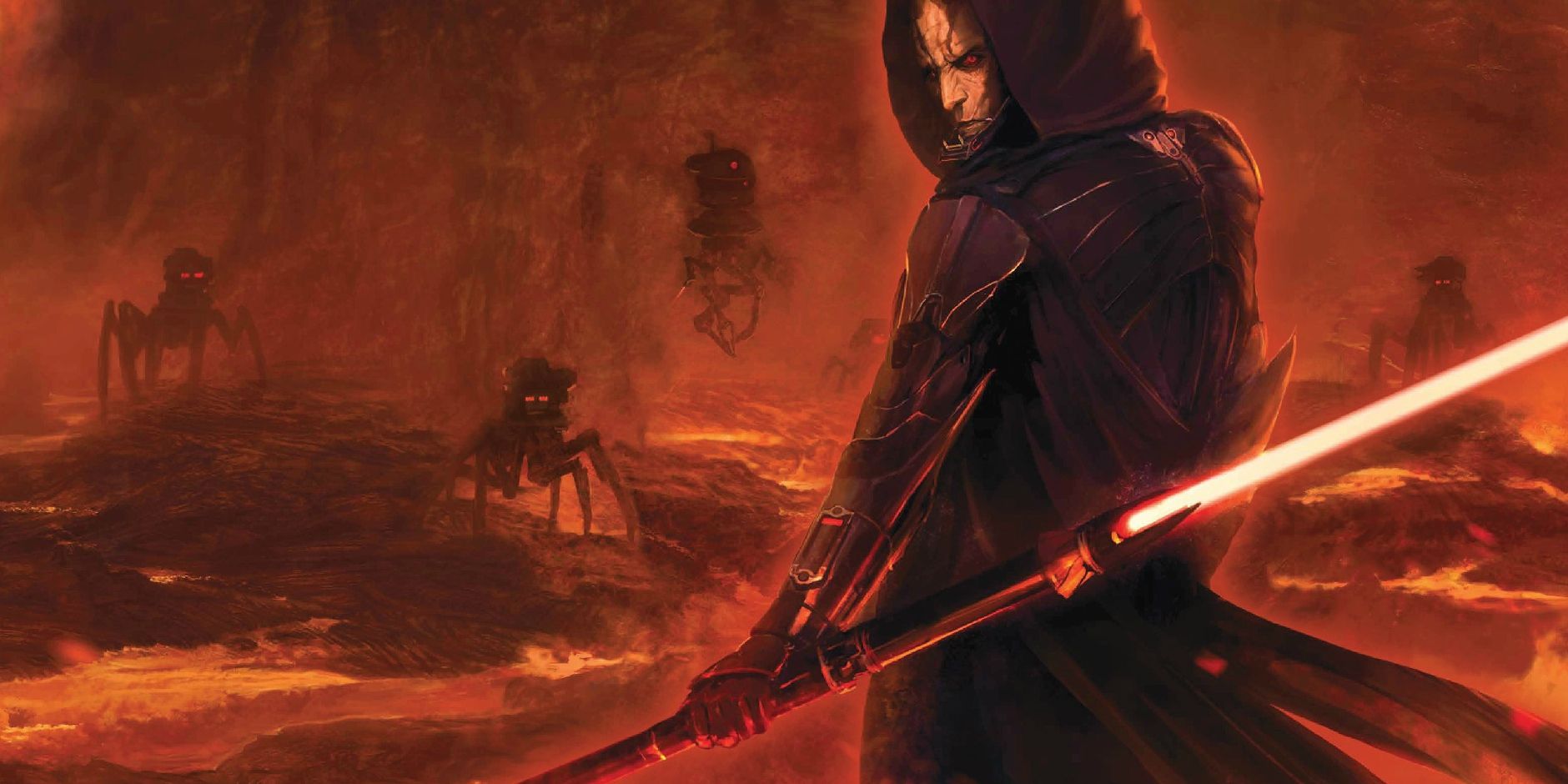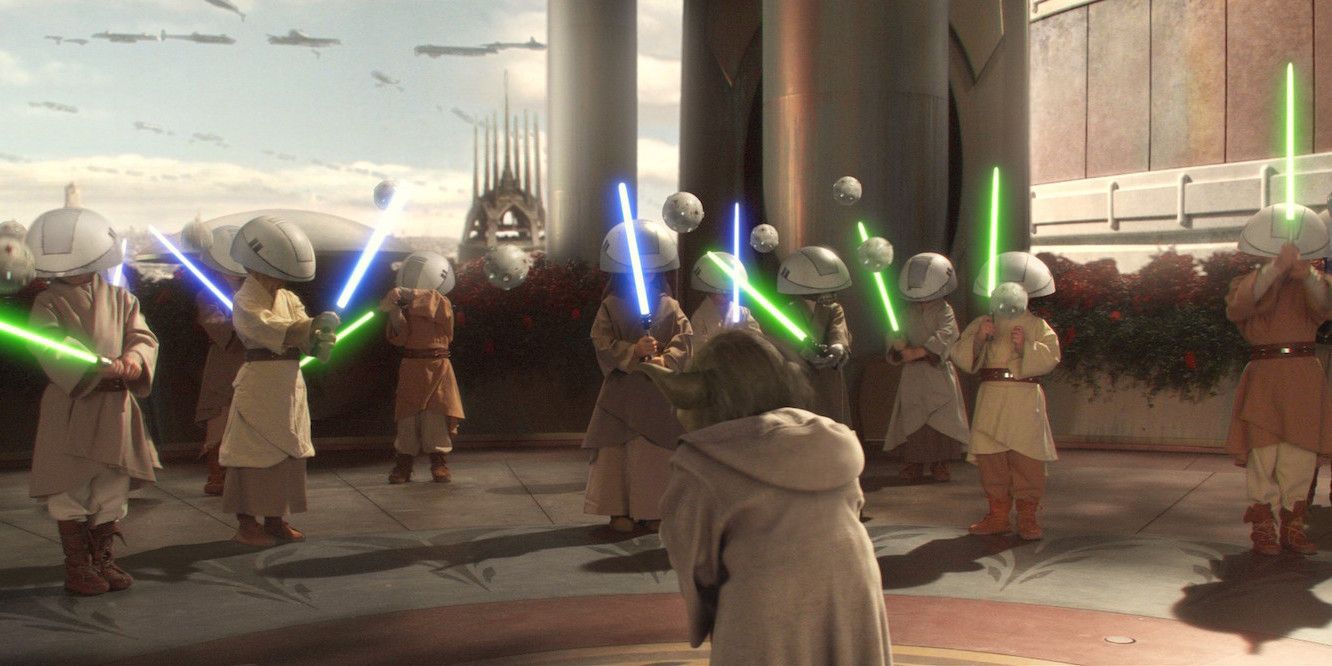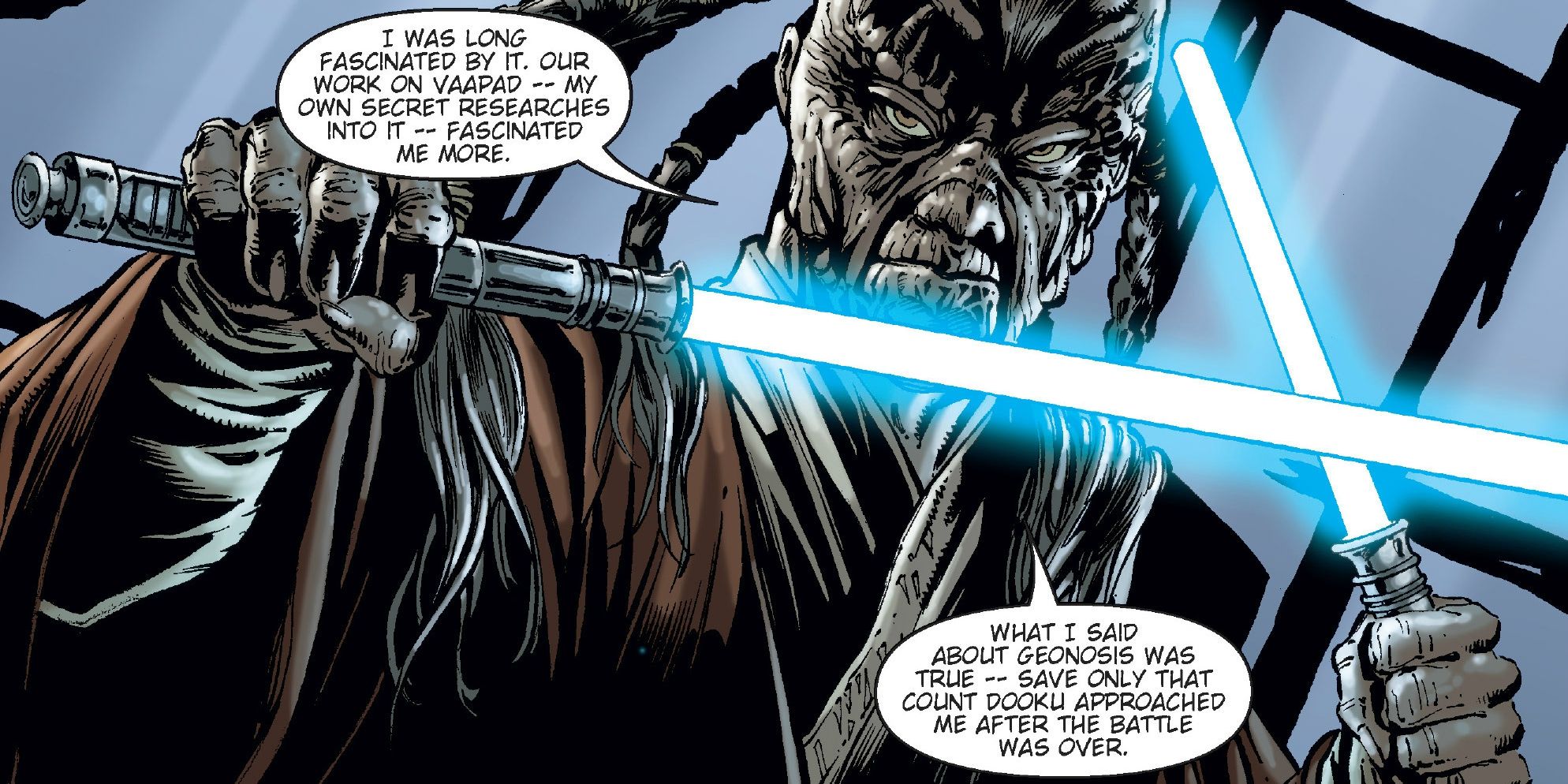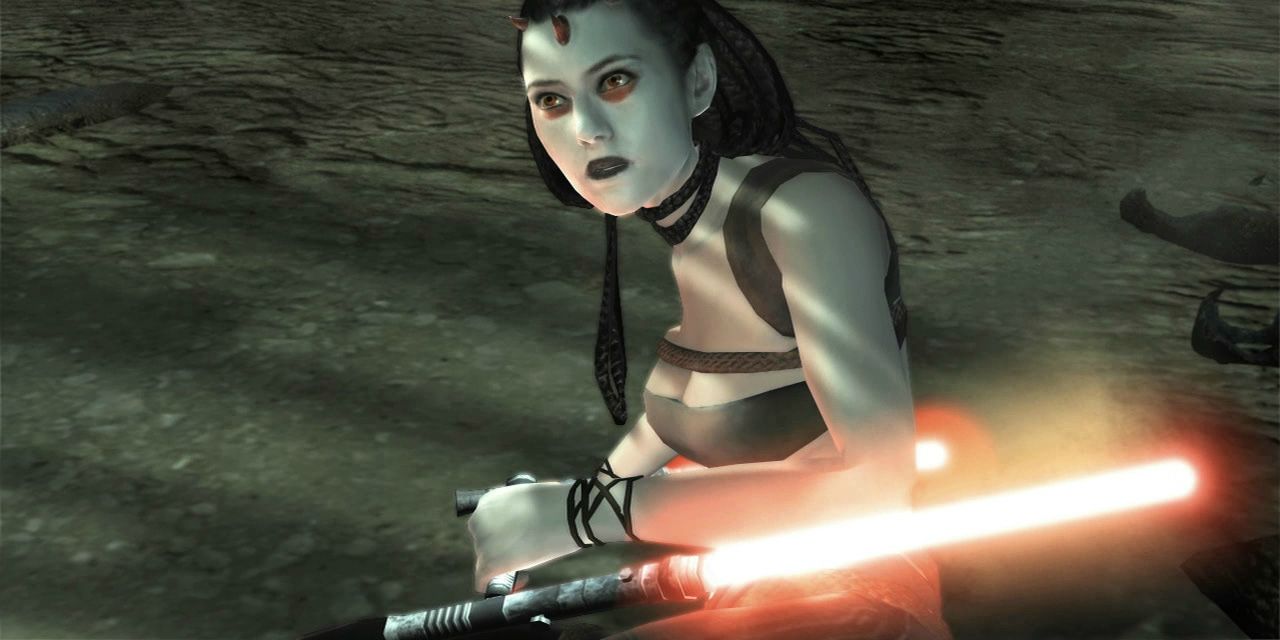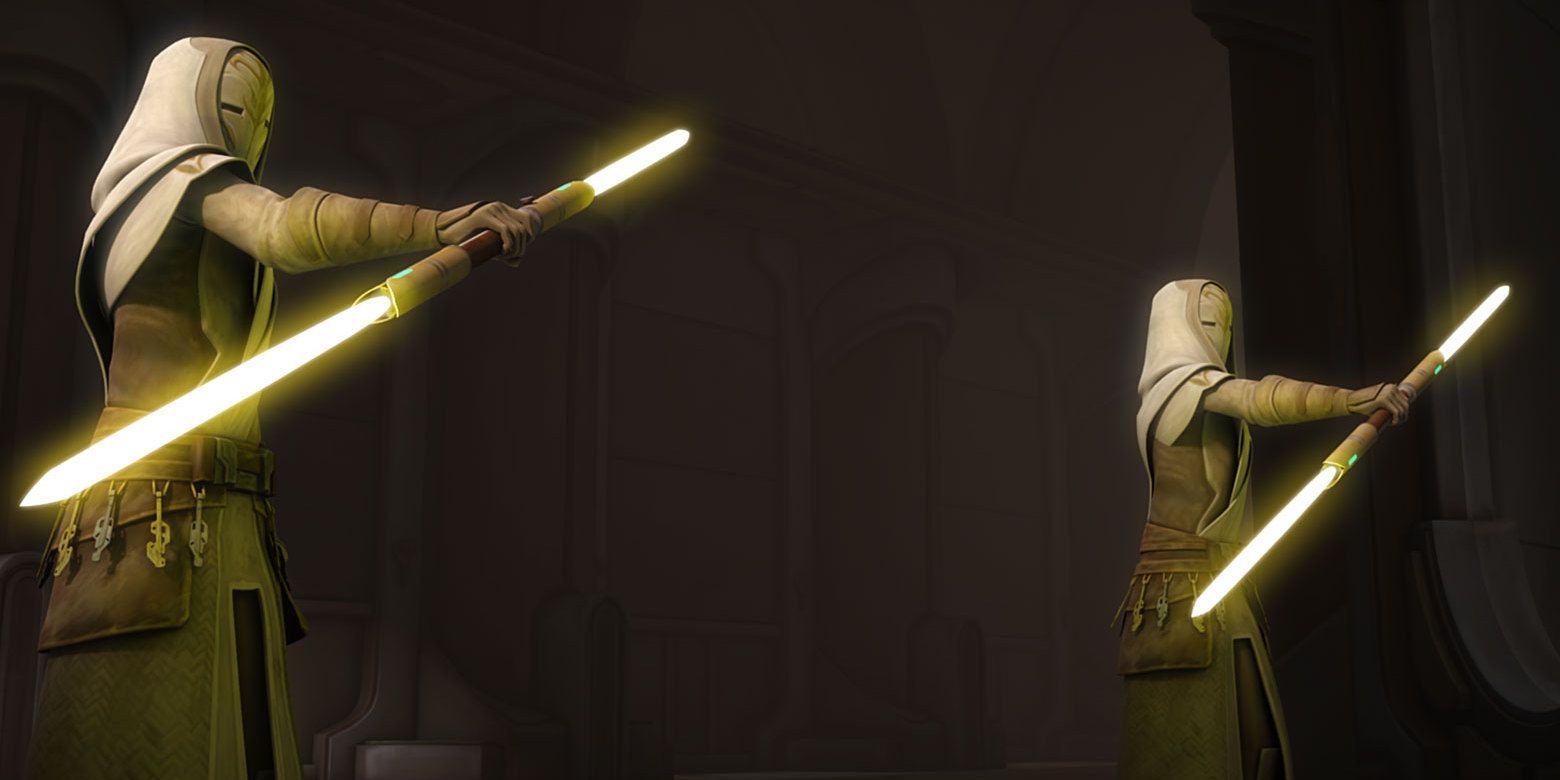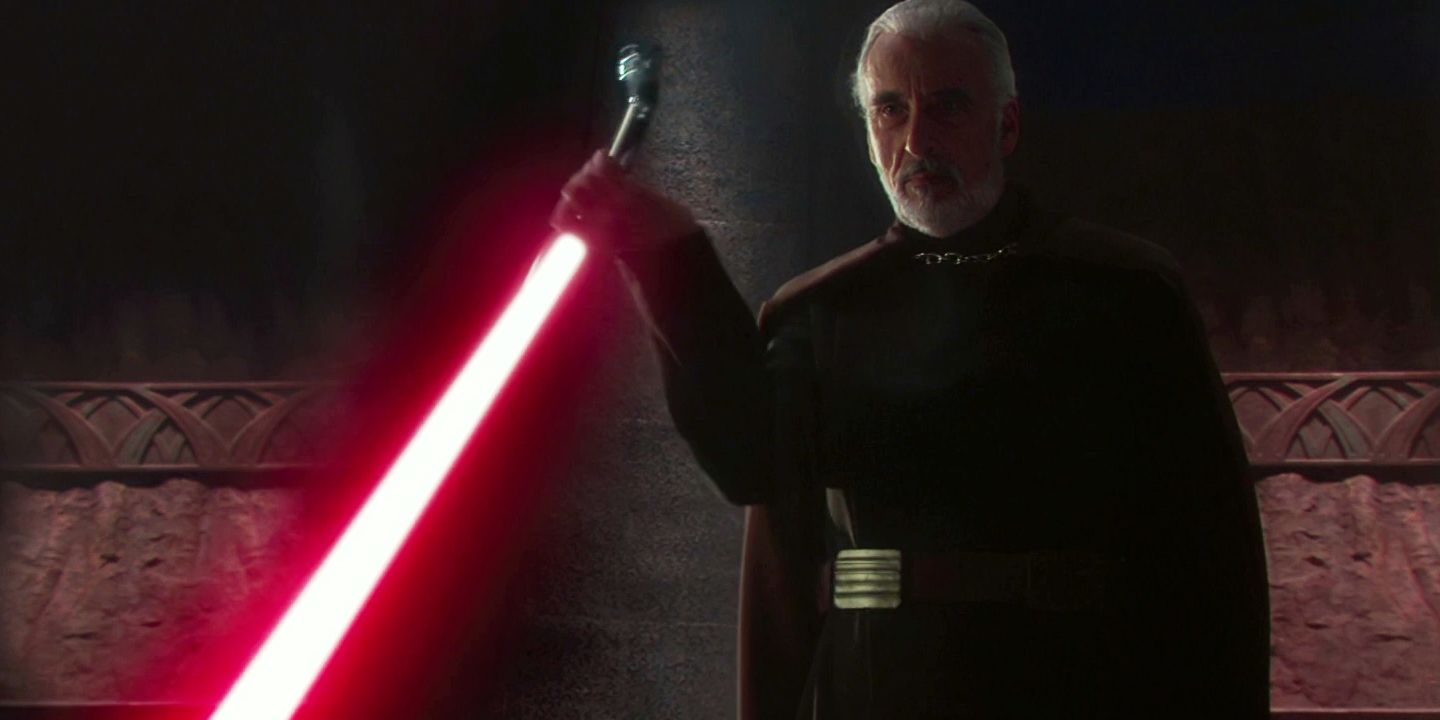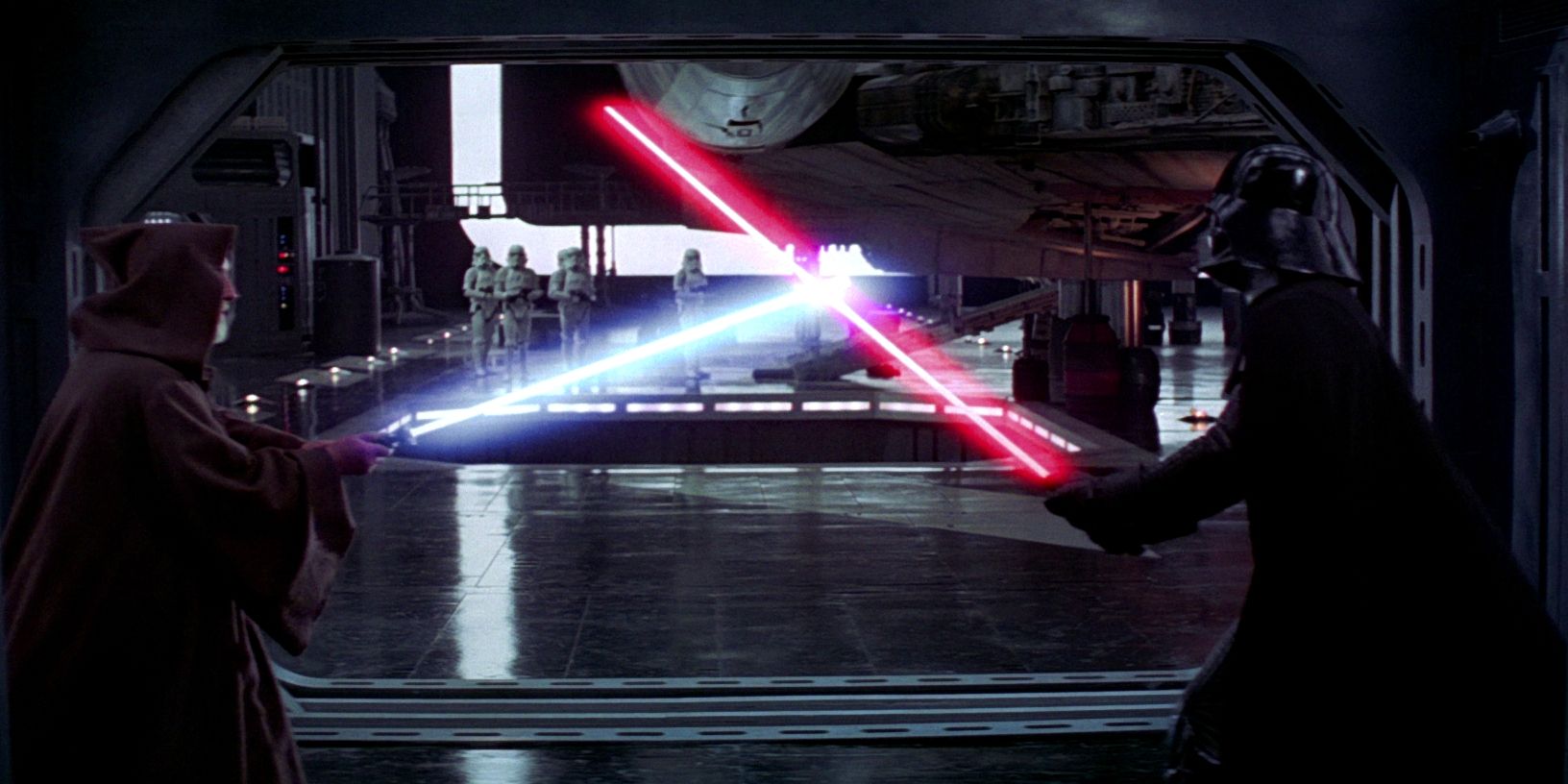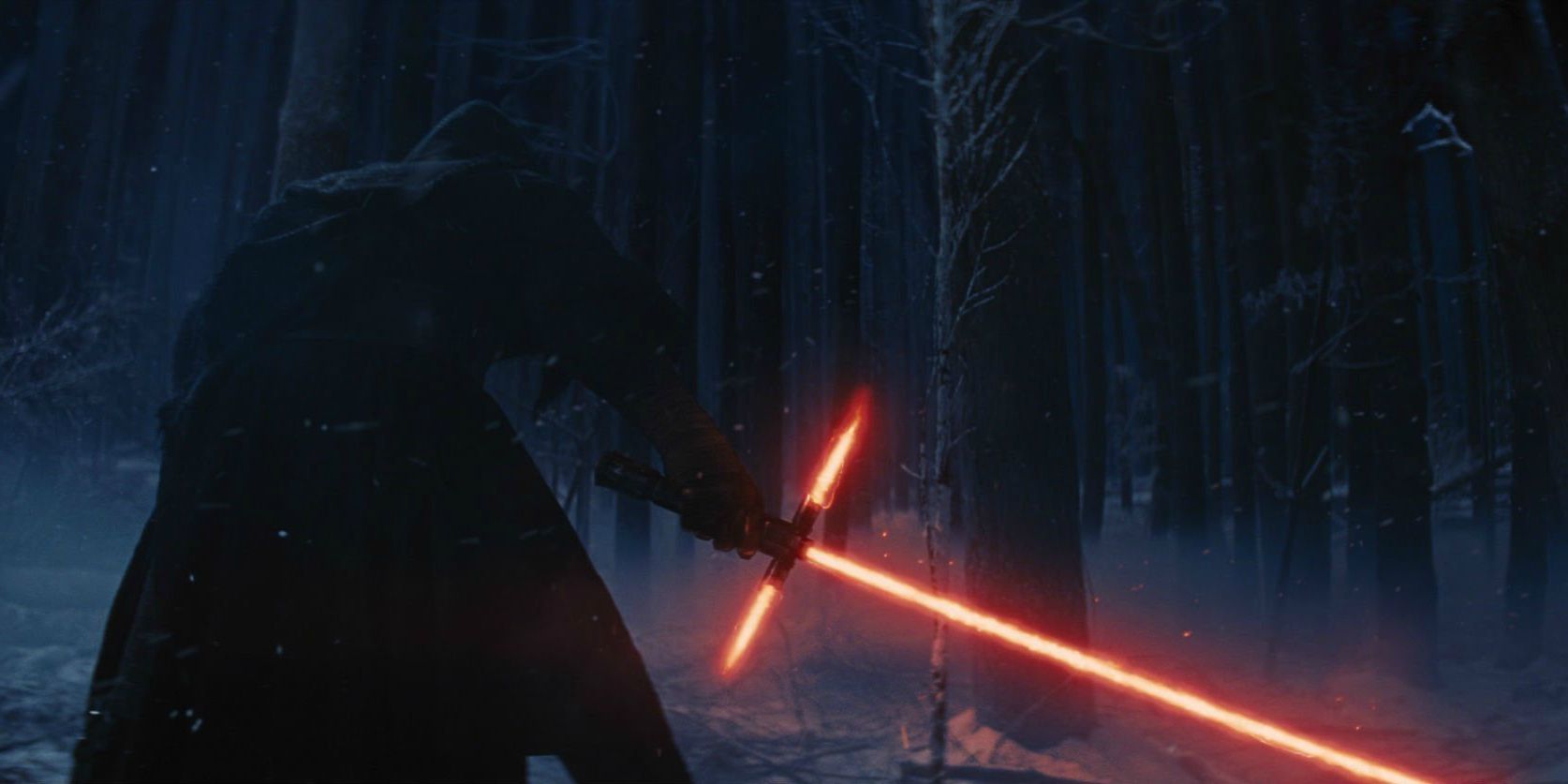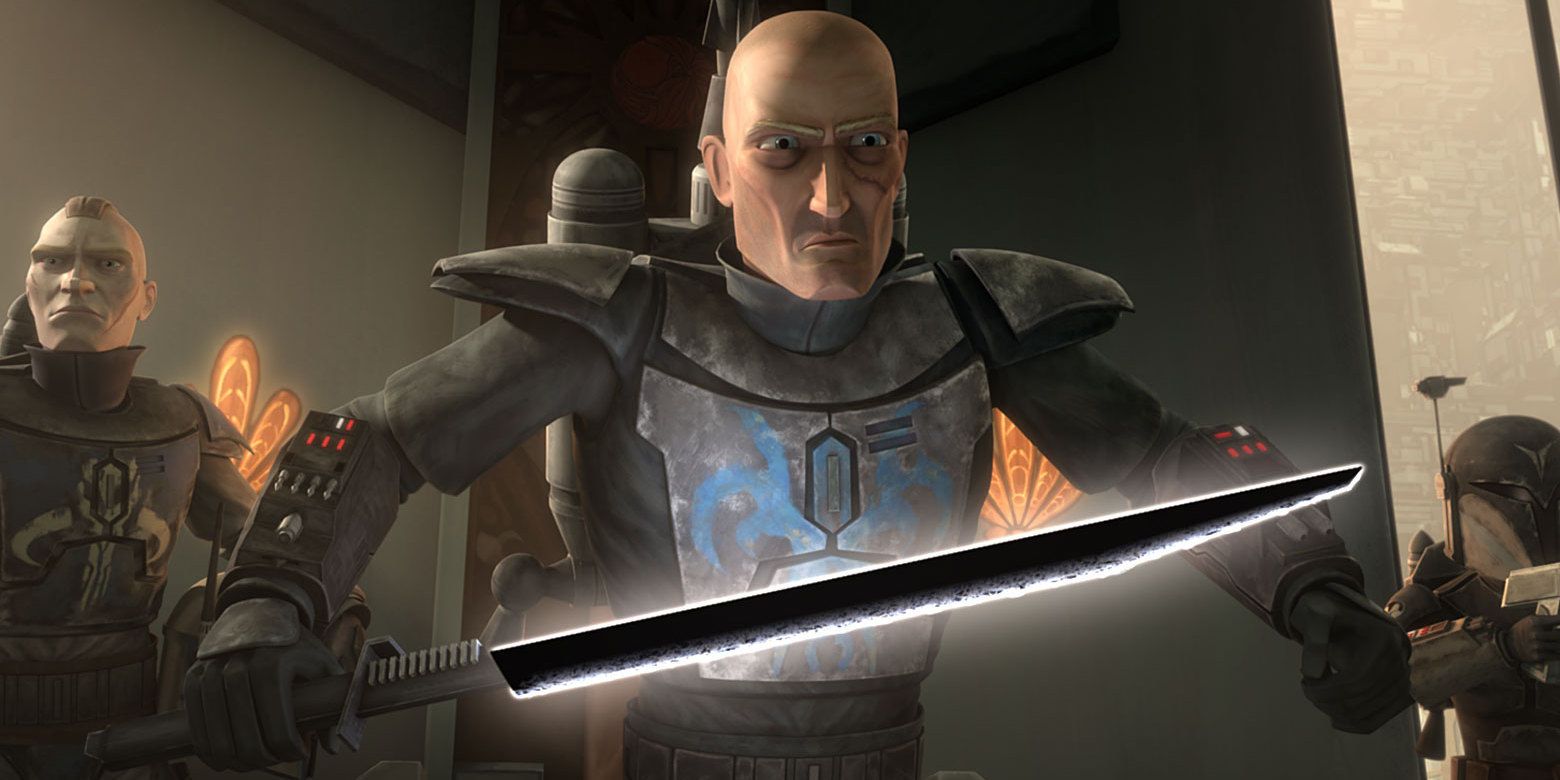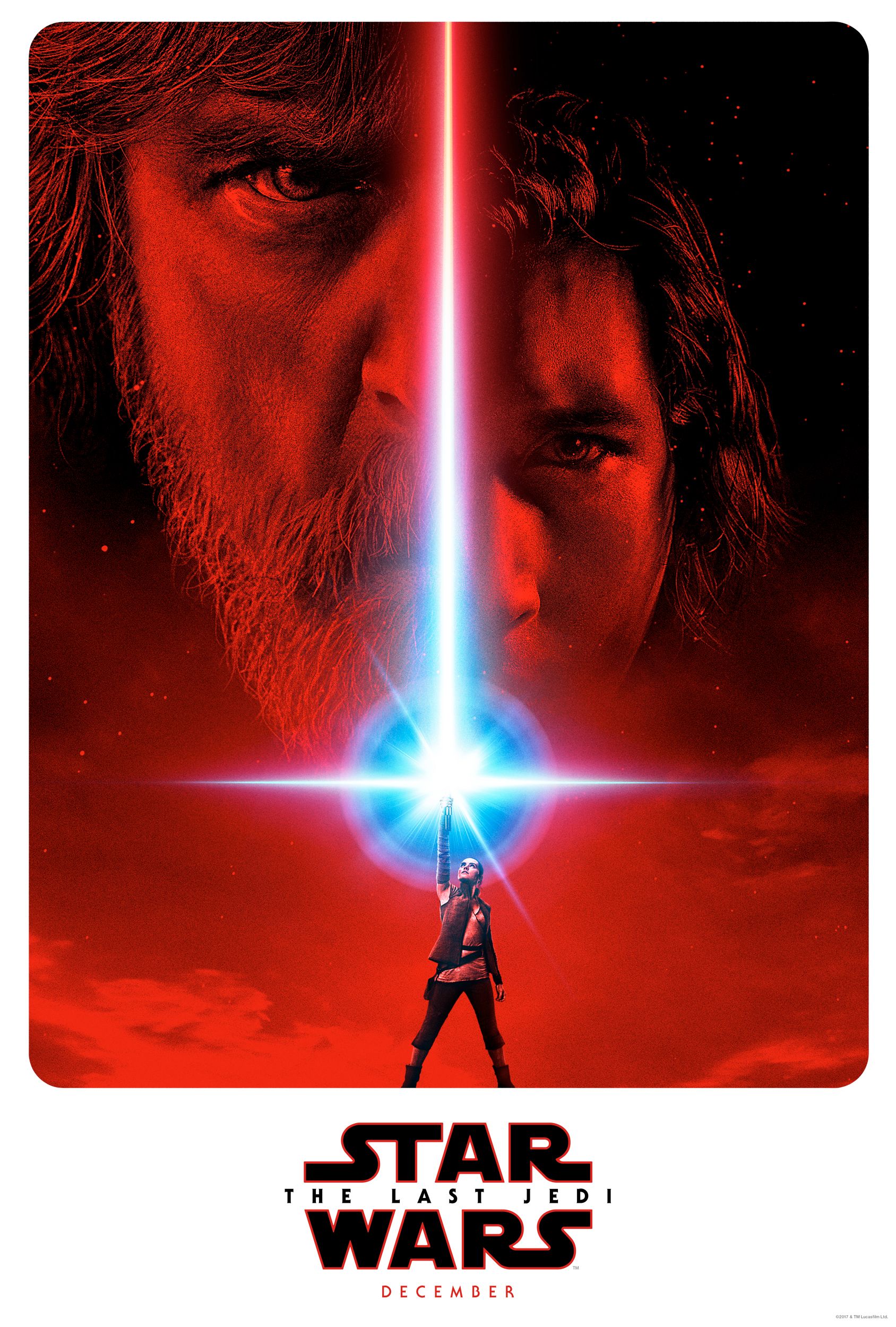“An elegant weapon, for a more civilized age.” The weapon of a Jedi Knight, the lightsaber has also gone on to become one of the most iconic weapons in all of cinema history. Whether it be blue, red, green, or even purple, the lightsaber represents all the mysterious wisdom and strength that a Jedi should possess.
Since its introduction in May of 1977, audiences have seen the lightsaber grow and evolve along with the rest of the Star Wars universe. It seems that with each addition to the Star Wars saga, be it theatrical, print, or television, more becomes uncovered about these mysterious weapons such as where they come from and what they’re capable of in the right hands..
Perhaps the most intriguing aspect of the lightsaber, however, are the ways in which each carrier’s weapon differs from another’s. In fact, these laser swords from a galaxy far, far away are so distinguished and intricate that keen-eyed fans can pick out specific lightsabers belonging to their favorite characters.
If the Force compels you, read on and discover 15 Ways Lightsabers Can Differ From One Another.
15. Kyber Crystals
The most noticeable difference among lightsabers is by far the color of the lightsaber blade itself. Originally only seen to be blue and red, then green, lightsaber blades have expanded to include nearly every color you can imagine, and all of this can be attributed to the object that powers the lightsaber itself, the kyber crystal.
These rare, Force-attuned crystals were the main component that powered the lightsaber and were naturally inclined towards the light side of the force. As part of Jedi training, young padawans would venture into the Crystal Caves found on the ice planet of Ilum. Here, the padawans would seek out and find their very own kyber crystal, as each crystal calls out to a specific Force-sensitive being individually.
Harvesting a kyber crystal was a similarly important rite of passage for the Sith. In order to give the crystal the signature crimson glow of a Sith lightsaber, the user must channel the dark side and dominate the crystal, causing it to “bleed” red.
14. Hilt Materials
Just as the process of locating and harvesting a kyber crystal is unique to each Jedi, so is the process of constructing their own lightsaber hilt. Each component of the lightsaber would be hand-selected by its user who would then tune each individual piece to work in harmony with one another. This process tended to involve long hours of meditation in order for the user to connect themselves and their lightsaber with the Force.
The power of the lightsaber was known to be immensely strong, and thus, ancient protosabers were connected to large, backpack-sized battery packs. As technology advanced, lightsaber hilts became more capable of containing the power within the kyber crystal on their own. Though often made of sturdy metals, the wood of a brylark tree was also known to be strong enough to construct a lightsaber hilt with, as used by Wookie Jedi youngling, Gungi.
As they were generally constructed utilizing whatever materials the Jedi had at hand, each hilt was uniquely distinguishable to their user.
13. Double-Blades
To say that the release of The Phantom Menace, the first release in the main series in over 15 years, was disappointing would be an understatement. Still, among all the political jargon and everyone’s least favorite Gungan, the film still had its bright spots. Among these memorable moments would have to be Ray Park’s portrayal of the dreaded Sith Lord, Darth Maul.
Without the benefit of memorable dialogue, Darth Maul has gone on to become the most memorable aspect of the film, primarily due to his distinctive double-bladed, red lightsaber. Also known as a saberstaff, Darth Maul’s double-bladed lightsaber was the first significant variance audiences would see in a lightsaber on the big screen.
From a practical perspective, saberstaff wielders required an advanced mastery over their weapon in order to keep track of both blades simultaneously whilst in a fight. Still, while impressive to see, the saberstaff drew much of its strength from the sheer intimidation factor it brings to a fight and a skilled fighter can exploit the weapon’s weaknesses to their own advantage. This can be best seen when Obi Wan is quickly able to slice the saberstaff in half once Darth Maul had been backed into a confined space at the end of the climactic battle in Episode 1.
12. Sabercane
Perhaps the most deceptive variation on lightsabers was the sabercane, which was simply a lightsaber with a hilt disguised as an ordinary walking cane. This lightsaber variation was rarely seen as it was more of a concealed weapon variation on the lightsaber, rather than a combat enhancing specialization that looked to take aggressors by surprise. The sabercane was obviously used to its greatest effect when employed by older individuals, in order to sell the farce of being a defenseless, elderly being.
Sabercanes were a rare sight across the galaxy, as their users generally intended to only utilize the weapon as a last resort. The most notable instance of the use of a sabercane comes in the Star Wars Rebels episode, “Twilight of the Apprentice” when Maul reappears, hiding on the Sith planet of Malachor. Maul’s double-bladed sabercane allowed the Sith Lord to hide in plain sight, appearing to be nothing more than a feeble old man, all the while, waiting for his opportunity to strike.
11. Lightsaber-Blaster Hybrid
Fans of the canonical animated series, Star Wars Rebels will no doubt recognize this unique weapon belonging to Jedi Padawan, Ezra Bridger. A hybrid design that combined a blaster component into the lightsaber hilt, this truly distinct lightsaber was a prototype designed by Bridger four years before the Battle of Yavin when the young padawan was 15 years old. This hybrid weapon was constructed mostly out of spare parts that were donated to Ezra by other members of his crew.
During his training, Ezra realized that his blaster deflection wasn’t quite up to par and decided that the best way for him to combat this weakness was to implement a blaster into his lightsaber. Additionally, the use of a lightsaber drew much unwanted attention during the age of the Galactic Empire so the ability to defend himself with a blaster unless absolutely necessary was ideal. This dual functionality allowed Ezra to use his lightsaber against other lightsaber wielding foes, and his blaster in the event of a firefight, an inherent advantage that most Jedi did not have.
10. Long-handle Lightsaber
When it comes to deceptively complex lightsaber variants, the long-handle lightsaber was among the top of the list. As the name suggests, this was merely a lightsaber with an extended handle, often several times longer than a standard sized lightsaber. This extended handle did more than extend the user’s reach, but also dictated the wielder adopt a particular fighting style that played to the lightsaber’s strengths.
Those who employed the long-handle lightsaber would often swing the lightsaber in wide, sweeping motions around their body, using the joints of their body as fulcrums of sorts to lever the lightsaber. This allowed the wielder the ability to keep their opponents at a distance, but also made them susceptible to the same sort of weaknesses saberstaff practitioners faced. The most glaring of these weaknesses was the fact that opposing duelists would often target the lengthy handle.
While not commonly seen during the time of the majority of the main Star Wars continuity, long-handle lightsabers were often seen during the Old Republic Era by Jedi, Dark Jedi, and Sith alike.
9. Training Lightsaber
Training lightsabers were exactly what they sound like, lightsabers used by Jedi younglings for learning purposes. Contrary to popular belief, these special lightsabers were not simply underpowered lightsabers, but rather, ones that possessed a highly intensified electromagnetic field. This field made these training lightsabers less dangerous than a standard lightsaber and perfect for less experienced users to learn with as they would cause nothing more than brusing and minor burns.Training lightsabers were used by Jedi Younglings until they completed the Gathering and created their own personal lightsabers.
With the assistance of a training lightsaber, Jedi Younglings learn the basics of Form I Shii-Cho, the oldest of the traditional forms of lightsaber combat. Fundamental lightsaber combat techniques such as disarming the opponent and basic blaster deflection were the focus of early training sessions. Obi-Wan Kenobi could be seen teaching these techniques to a young Luke Skywalker aboard the Millennium Falcon after initially leaving Tatooine.
In times of great danger, a trained Jedi Knight or Jedi Master could adjust the training lightsaber in order to utilize the weapon as a standard lightsaber.
8. Underwater Lightsaber
With all the incredible things that lightsabers are capable of, one of the things they couldn’t do for many centuries was function properly underwater. It wasn’t until Jedi Master, Kit Fisto developed his own personal lightsaber in the twilight years of the Galactic Republic that lightsaber technology improved to the point where it could function properly underwater.
Traditional lightsabers were incapable of functioning underwater and one that was submerged in water would additionally require a few minor repairs before it could be used again. Kit Fisto, a Jedi Master from the aquatic planet of Glee Anselm thankfully developed a lightsaber that featured a bifurcating cyclical-ignition pulse, which was essentially a waterproof casing. This unique feature was made possible by the inclusion of a secondary lightsaber crystal within Fisto’s lightsaber hilt.
Kit Fisto’s designs would later be recorded in the Great Holocron housed in the Jedi Archives on Coruscant, to be replicated by many other Jedi during the Clone Wars.
7. Lightsaber Shoto
A lightsaber shoto is essentially a miniaturized version of standard lightsabers, roughly half the size in terms of blade length and grip size. For most users, the shoto was used in the off-hand in conjunction with a standard sized lightsaber as a way to counter-attack. This method of combat was not easy to master and required the user to maintain an advanced knowledge of Jar’Kai, a style of lightsaber combat that focused on the use of dual blades.
Aside from its use as a secondary weapon, a lightsaber shoto was also occasionally utilized as a primary weapon for those Force-wielders of a more diminutive stature. The most obvious example of this is, of course, the former Grand Master of the Jedi Order, Yoda.
Regardless of if the use of the lightsaber shoto was born out of a desire for a secondary blade or out of necessity due to size, a lightsaber shoto was generally designed to be similar to it’s larger cousins in every aspect. The components would be similar, but smaller to maximize dexterity and grip. Perhaps the most noteworthy difference between a shoto and a standard sized lightsaber, aside from of course its size, is that they tended to be designed as a weapon that could be thrown as a projectile effectively.
6. Guard Shoto
Similar to the shoto lightsaber, the guard shoto was a lightsaber variant that was noticeably shorter than a standard lightsaber. The distinguishing feature of the guard shoto was it’s secondary handle that extends from the main one, leading the guard shoto to be commonly referred to by many as a lightsaber tonfa.
Similarly to the lightsaber shoto, the guard shoto was primarily used was a defensive weapon, with the perpendicular handle allowing for a wide variety of blocks and parries. Some users opted to infuse the hilt with phrik, a rare metallic compound that was strong enough to resist lightsaber blades themselves. With the hilt doubling as another defensive surface, a skilled guard shoto user’s defensive posture could be nearly impossible to break in combat.
With such strengths as a defensive weapon, the guard shoto lacked as an offensive weapon. While holding the saber with the blade pointed outwards allows for greater offensive capabilities, it was inherently at a disadvantage as the grip positioning makes it difficult for the user to deliver many powerful attacks.
5. Lightsaber Pike
The lightsaber pike was a lightsaber variation that was similar in appearance and function to a double-bladed lightsaber and was most notably used by the Jedi Temple Guard. This variant featured a thick hilt, longer than a standard lightsaber and closely resembling the saberstaff and when used by the Jedi Temple Guard, always emitted a distinctive yellow blade on each end.
The long handle of the lightsaber pike was adorned with phrik alloy, making the entire weapon resistant to other lightsabers. The blades on either end of the pike were also shorter and thicker than standard lightsaber blades, making the weapon almost as long as the user’s body. Given its extended reach, someone wielding a lightsaber pike could keep their enemies at a great distance.
As these were the signature lightsaber of the Jedi Temple Guard, they were often seen guarding the Jedi Temple on Coruscant. The Temple Guard can be seen using these lightsaber pikes to restrain a concerned Anakin Skywalker during his Padawan Ahsoka Tano’s Jedi trial and later during his battle with fallen Jedi Padawan, Baris Offee.
4. Curved-Hilt Lightsaber
The curved-hilt lightsaber was a variant created to specifically enhance the combat capabilities of Form II Makashi users. This lightsaber variant featured a pronounced curvature towards the top of the lightsaber’s hilt. This curvature allowed users of the fencing-style of Makashi a weapon with a more balanced weight that handled better in lightsaber-to-lightsaber combat.
While the curved design of this lightsaber helped to highlight Makashi’s strengths as a lightsaber-to-lightsaber centric form, it also made the form’s most glaring weakness more pronounced. As a style focused entirely on lightsaber duels, Makashi suffered from a lack of focus on blaster deflection. The curved-hilt design, though it fit better in the palm, made deflecting blaster bolts increasingly more difficult, save for Makashi’s most skilled practitioners.
While a subtle variant when compared to some of the more radical lightsaber designs, a curved-hilt lightsaber was especially dangerous in the hands of a skilled Makashi swordsman. The curved-hilt lightsaber variant was most famously wielded by the wise Jedi master turned powerful Sith Lord, Count Dooku.
3. Dual-Phase Lightsaber
Perhaps the least common variation of the lightsaber was the dual-phase lightsaber. This design variant allowed the user to extend their lightsaber blade beyond its standard length of roughly a single meter to up to three times its length.The dual-phase lightsaber allowed the length extend trigger to occur nearly instantaneously, giving its user the opportunity to take their opponent by surprise.
The dual-phase lightsaber was one of the rarest lightsaber variants primarily because it was difficult to properly take advantage of the extended blade length that it provided. None of the seven traditional forms of lightsaber combat dedicated training to properly utilizing the longer blade. While not considered practical, the dual-phase functionality allowed for a level of intimidation that an experienced user could exploit.
The best-known example of a dual-phase lightsaber is perhaps Darth Vader’s personal, red lightsaber. Given Vader’s immense skill in lightsaber combat and his particular proficiency with Form V Djem So’s brute force style of combat, it’s likely that the dual phase functionality served the Dark Lord of the Sith well during his reign of power.
2. Crossguard Lightsaber
The latest variation in lightsaber modification that Star Wars fans have been introduced to is Kylo Ren’s crossguard modification. Though most clearly associated with the man once known as Ben Solo, the design itself is actually an ancient one that dates back to the Great Scourge of Malachor.
Easily identified by its trio of blades, the crossguard lightsaber’s extra blades emitting from the hilt added an extra layer of protection for the wielder as well as an extra point of offense, as seen when Kylo Ren battles Finn at the climax of The Force Awakens. The two power vents from the hilt of the crossguard lightsaber are known as quillons and in order to create them, focusing crystal activators were required to split the kyber crystal’s energy.
Kylo Ren’s crossguard lightsaber is noteworthy for its unique design, implementing modern components into the ancient lightsaber design. Its unstable appearance is due to the fact that the kyber crystal used to create it was flawed and cracked, making containing the weapon’s raw power difficult without the use of the quillon power vents.
1. Darksaber
The darksaber was an ancient weapon that once belonged to the Jedi Order, but was eventually stolen by the Mandalorians. It was a unique looking lightsaber in that it sported a striking looking black blade that came to a point at the end, giving it the appearance of a traditional Japanese katana.
After a raid on the Jedi Temple, some Mandalorians of the Clan Vizsla stole the darksaber and used it to kill many Jedi. The saber was seen again during the Clone Wars in the possession of Pre Vizsla, leader of the Mandalorian splinter group, Death Watch.
In terms of its functionality, the darksaber appeared to operate as any other standard lightsaber would. Aside from the unique black blade color, the most striking aspect of the darksaber was the shape of the blade. Instead of the standard rounded end, the darksaber came to a very distinctly sharp point. This blade shape did not seem to give its user any significant advantage, instead serving as a purely aesthetic difference and perhaps a minor psychological advantage, given the more intimidating appearance of the blade.

